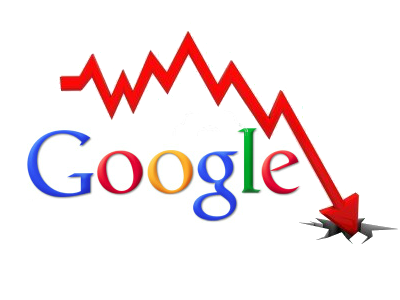
So, you’ve noticed a drop in your traffic, rankings, or you’ve been removed from the index all together, have you been hit by Google?
How do you know? Where do you start?
A million questions are running through your head and we are here to help…
We have compiled a crucial guide, laying out exactly what you should do from beginning to end. Link removal can be a very time consuming project with a lot to figure out, so let’s get started.
IDENTIFYING THE PENALTY:
It’s time to identify precisely what has happened; what type of penalty you have been hit with and how do you know.
First, check if you’ve received a manual action, a message will appear in Google Webmaster tools identifying any action taken and the cause for it. Google could have issued a partial-match penalty to act on some inbound links, or in a severe case, issued a site-wide penalty which disturbs the ranking of your whole site. Either way, with any manual action, you need to execute an in-depth link removal campaign that I will explain further.
If you have not received a message, you could have been hit by an algorithm penalty. This can be caused by low quality, duplicate content, or unnatural backlinks and over-optimized anchor texts. Your next step is to get your content up to par and/or audit all of your backlinks. It’s time to make some changes and prove your worth to Google. If you have uncovered spammy backlinks, it’s in your best interest to remove them if possible and upload a disavow file to Google. This tool is your last resort after you have exhausted all efforts to get the bad links removed. This file allows you to effectively tell Google that you want them to ignore the value of these links. Now, you patiently wait for a refresh to see any improvements.
MANUAL ACTIONS:
Ok, back to the dreadful manual actions. Initially, you must gather ALL of your backlinks from multiple sources, not just one. After collecting from Google webmaster tools, Majestic, Moz’s open site explorer, and Raven, make one comprehensive list and remove duplicates. Now, audit all links, manually! It’s the only way! While removing all the bad links, you need to be certain you aren’t removing the good as well.
TIP: Manual spam actions do expire after some time but there is no way to know when. The time frame is determined by the severity of guidelines that were broken. If you don’t get the penalty lifted and you wait for it to expire, odds are you will receive another penalty down the road.
What would be considered a bad link?
- Unnatural links
- Links coming in from spammy/untrusted sites
- Over optimized anchor text links
- Article directories
- Paid links
- Links from dead, low quality directories
- Links from irrelevant sites
TIP: Continue to grab a new list from Google Webmaster Tools every day for up to 10 days – this will ensure you are grabbing all sample links provided.
LINK REMOVAL CAMPAIGN:
After you are confident in your full backlink audit, your link removal campaign is ready to begin. We suggest the link removal management tool, Rmoov. It’s awesome! After uploading your list of domains/URLs, it organizes everything from template emails, sending the emails, follow ups, automatically checking links, marks domains cleaned up and documents the whole process.
At the end of your campaign, Rmoov allows you to export a detailed report of your efforts for Google along with a disavow file.
TIP: Your email pitch to the webmaster requesting link removal should come from a company email address and be sure to include the link and its location.
RECONSIDERATION REQUEST:
The final report of your entire campaign will be included with your Google Reconsideration Request, which is only needed for a manual penalty. This document is where you state what guidelines you have violated, an explanation of what you changed and why. Outline your efforts and don’t forget to include link examples. If you have filed a disavow list, mention this in your request as well.
Sure this whole process is tedious and time consuming but it does allow you the opportunity to acknowledge your slip-ups to Google and eventually get your site back where it deserves to be.
TIP: Come clean with Google, undeniably stating your past mistakes (even providing the name of the company who has helped get you into this mess) and deliver future plans that you have put in place for this to never happen again.
- 5 Tips For Submitting a Reconsideration Request
- Google Reconsideration Request Tips From #GoogleRecon
- Google reconsideration request checklist
Have you done enough for Google to recognize your efforts? Only time will tell. It could take 2-6 weeks to begin seeing any changes or a penalty lift. In the meantime, continue to keep a close eye on things. A clean backlink profile and fresh, high-quality content are crucial to not only recovering, but also avoiding any type of Google penalty in the future.
TIP: Recovering your rankings will never be immediate and will take time, BE PATIENT.
We hope you found this guide helpful. Teknicks would love to hear any stories of your experience with Google penalties. As always, if you have any questions, we’d be happy to help.